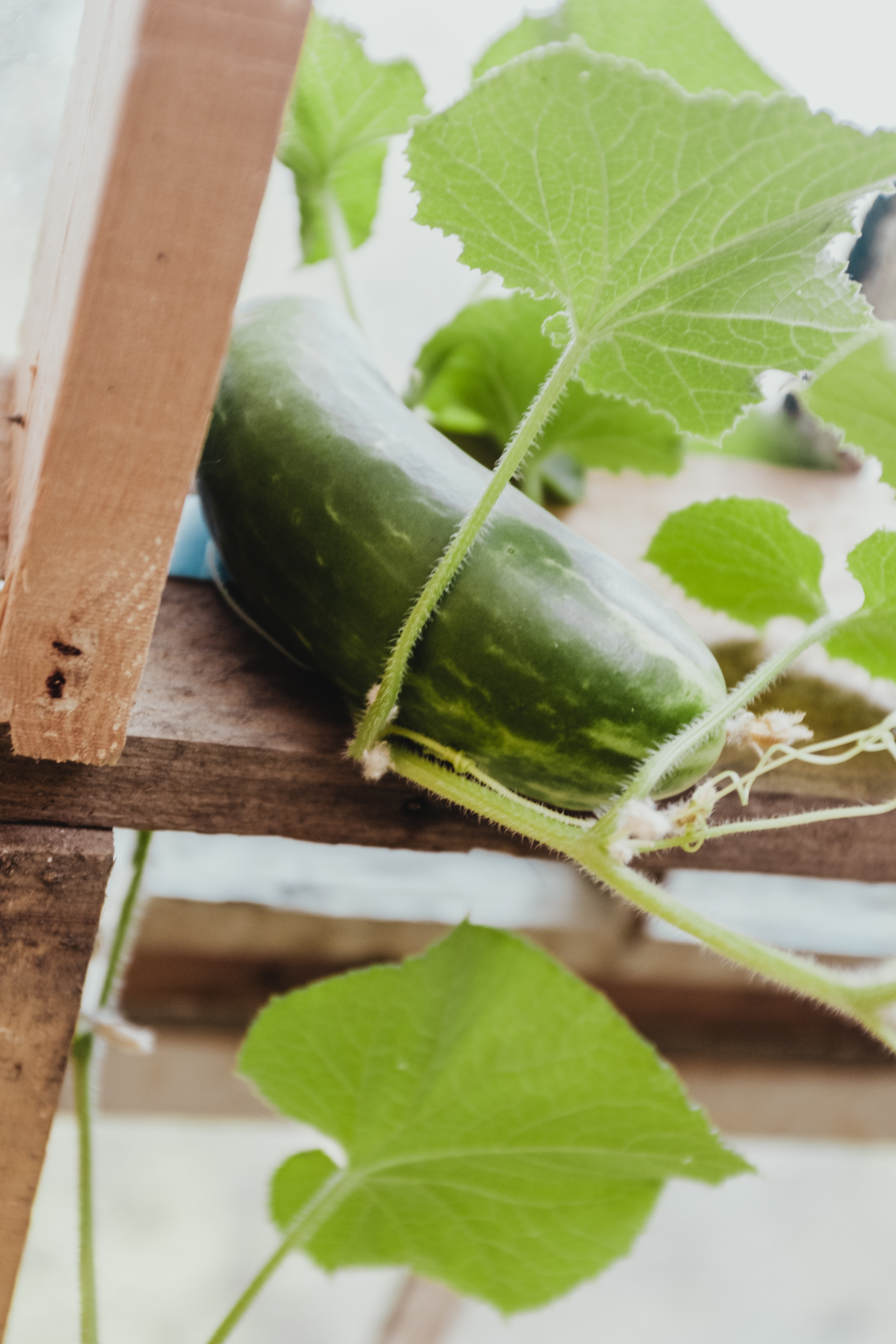Cucumbers are an extremely popular summer fruit that is eaten widely in salads and is also sometimes even pickled as whole fruits or slice sections of a cucumber which are used are things like sandwiches. However, if you are growing them at home at your place the other question you may be wondering is is it safe to eat cucumber leaves.
Cucumber leaves are safe to eat and are most tender when the leaves are young. However, these leaves do contain oxalic acid when fresh in relatively low quantities which means that generally not recommended to be eaten fresh. They need to be cooked otherwise you are likely to get an upset stomach.
However, one significant downside of picking cucumber leaves is it will significantly affect the production of the plant if you harvest too many leaves particularly when it is young. This is because it reduces the amount of surface area of the leaves which is primarily there for the purposes of photosynthesis.
So removing too many leaves will result in a lower growth rate and therefore potentially reduce the production of fruit which is one of the main reasons by eating cucumbers is not a common practice.

Is Eating Cucumber Leaves Actually Good 4 For You?
Like most leafy greens, eating of cucumber leaves is relatively good for you. The cucumber leaves contain a range of minerals including a surprisingly high level of vitamin C along with a range of trace minerals.
However, the leaves behave as a diuretic which means that they can cause you to urinate more frequently and they also contain oxalates which can cause kidney stones if eaten in larger quantities.
However, this generally is not too much of a concern as there are other leafy greens such as spinach and silverbeet that also contain oxalates in relatively high levels. This does not generally cause too much of a problem as people generally do not eat anywhere near the quantity required to create kidney stones.
Can You Eat Cucumber Leaves With Powdery Mildew?
One of the other significant factors why cucumber leaves are also not eaten very frequently is because cucumbers like other plants from the cucurbit family such as pumpkins are prone to powdery mildew. But is it actually safe to eat cucumber leaves with powdery mildew?
Powdery mildew is a fungal disease that appears every year in most vegetable gardens and typically occurs later in the season when the leaves are more mature. The leaves generally are not recommended for consumption even if they are washed to remove the spores simply because if powdery mildew is visible to the naked eye the size of the colony that you can are consuming is relatively large which is not recommended.

But if you are really keen on eating cucumber leaves you can treat the plants for powdery mildew throughout the season with natural products such as milk and bicarbonate solutions which are natural and non-toxic. Of these two remedies, milk is considered the more practical solution if sprayed on the leaves as a 50% solution.
However, it is important to recognize that milk does not eliminate the presence of powdery mildew once it has got going on your leaves, it is instead a preventative measure that will stop any colonies that do exist on your leaves from expanding and therefore needs to be applied early in the season on a weekly basis before powdery mildew is actually a problem.
Are There Any Other Ways To Get An Early Harvest From A Cucumber Plant?
Generally, most people harvesting leaves are typically doing it because they want to get an early harvest out of the cucumber plants. So are there any other ways to bring the harvest forward, whether that be by picking leaves or fruit?
There are several methods that are used by gardeners to bring the harvest forward in the season. The most obvious of these is to plant the seeds early in the season which can only be done indoors in most geographic regions. Typically the earliest that you can plant cucumber seeds is around 6 weeks prior to the last frost of the season.
Planting any earlier than that generally does not provide any significant benefits in terms of the harvest timings because the weather is simply not warm enough and there is generally not enough light around unless of course, you are going to grow plants in an artificial environment.

The second significant strategy that is used by most gardeners is to apply a cloche or row cover to new seedlings as they are planted out into the garden. This process typically produces an increase of a couple of degrees in temperature which in the early part of the season will be significant to the growth rate observed.
The other thing that can sometimes help to accelerate the rate of harvest and the size of it, is to hand pollinate the flowers as they appear on the plants. This is a process that is fairly easy to do but it can be a little bit time-consuming if you have lots of plants. This can be done by using a fine artist’s brush and passing out from one flower to the next which will transfer the pollen and encourage the formation of additional fruits.
The other area where you can get early harvests from, apart picking leaves, is by picking the fruit early. Cucumbers are one of the few fruits that can pretty much be picked at any stage throughout the seasons even if they are relatively small. Many companies pickle tiny cucumbers and sell them commercially.
Relevant Articles
How Can You Tell If A Tomato Flower Is Male Or Female?
Are Potatoes Legumes? If Not What Are They?
Can You Plant Tomato Seeds Directly In The Ground?
Can You Grow Grapes From A Store-Bought Bunch? Is It Possible?

Comments are closed